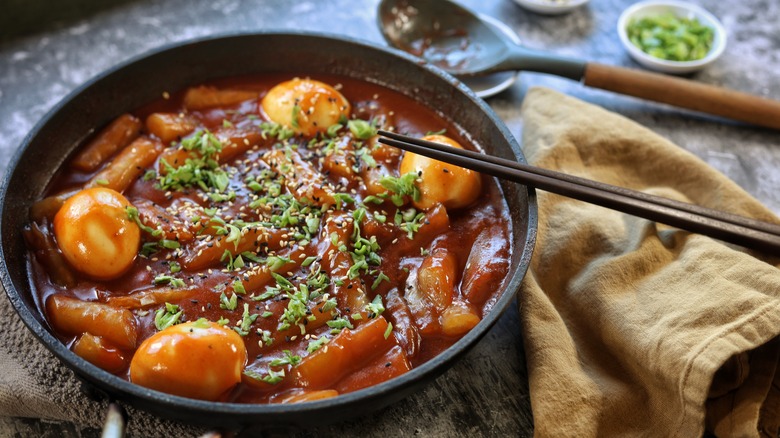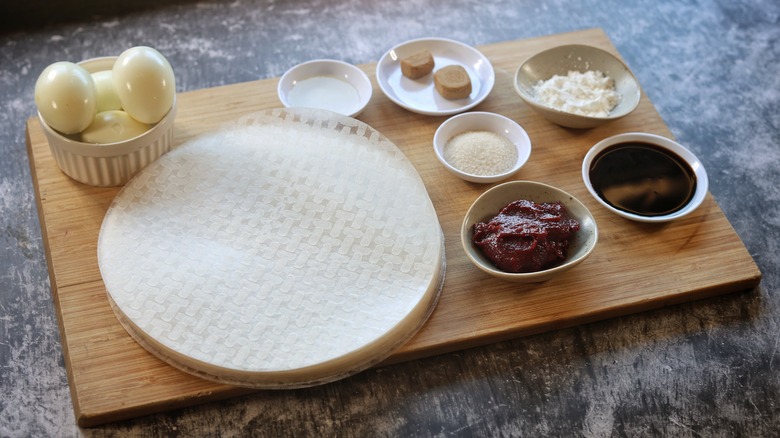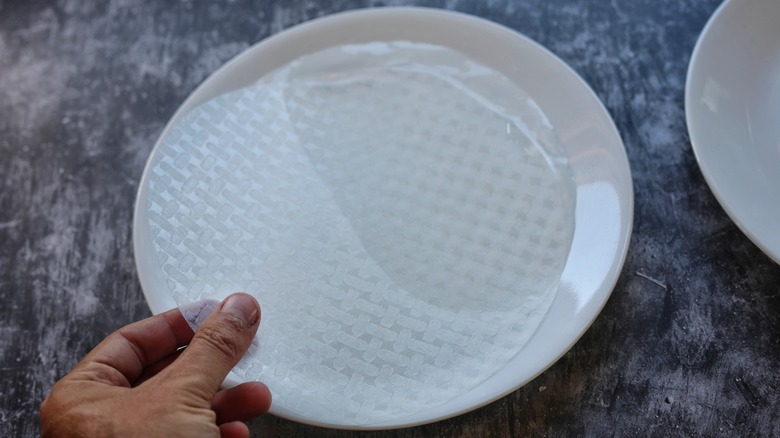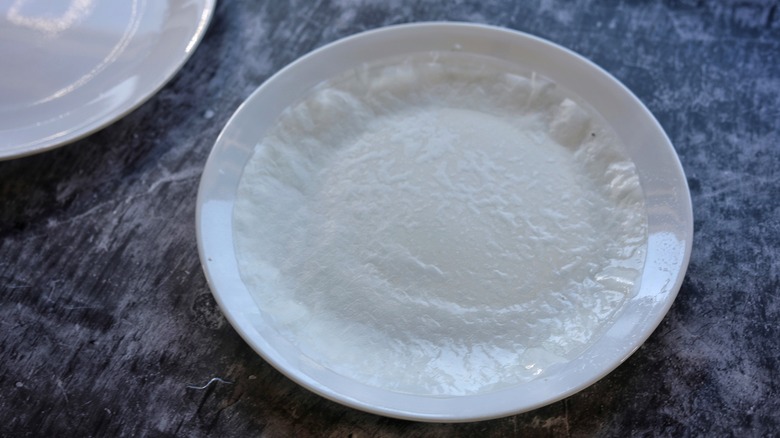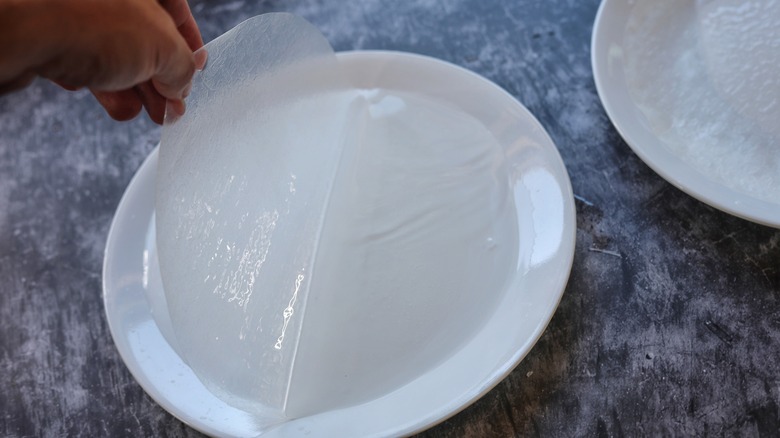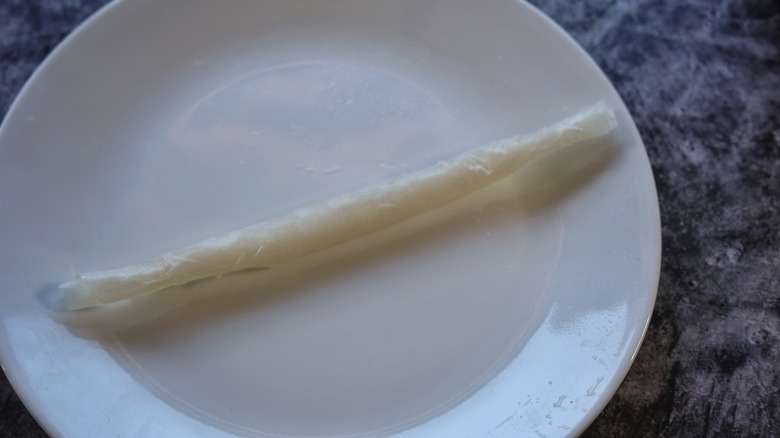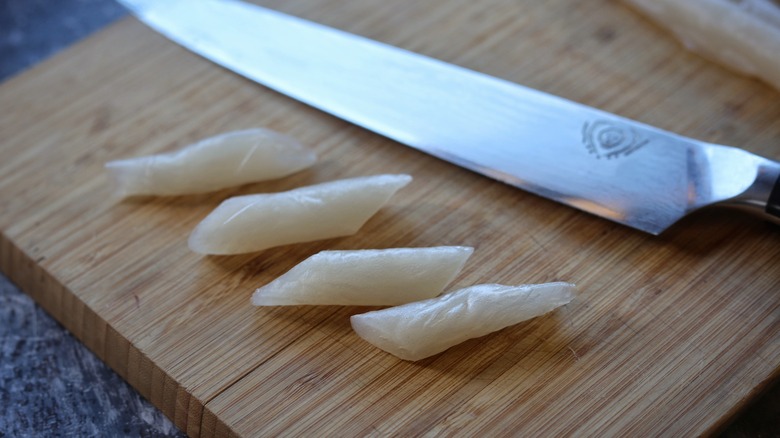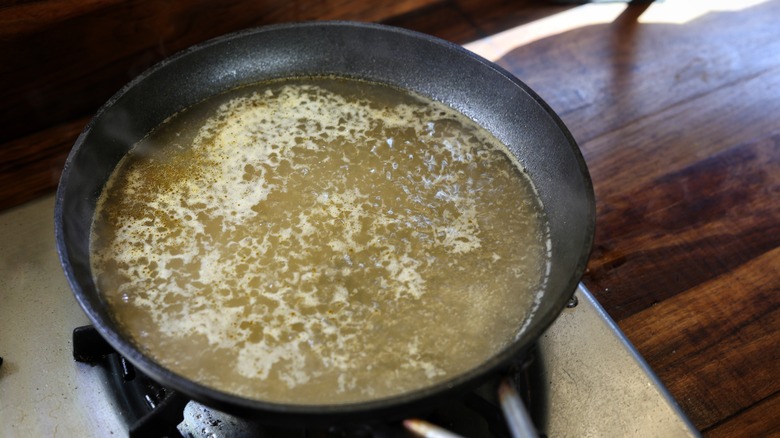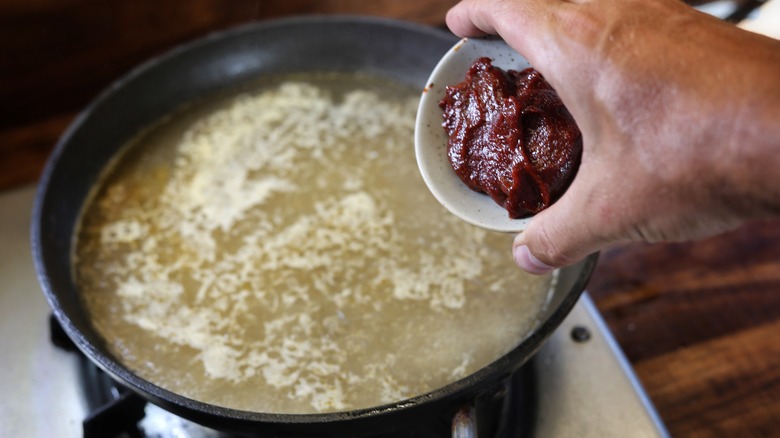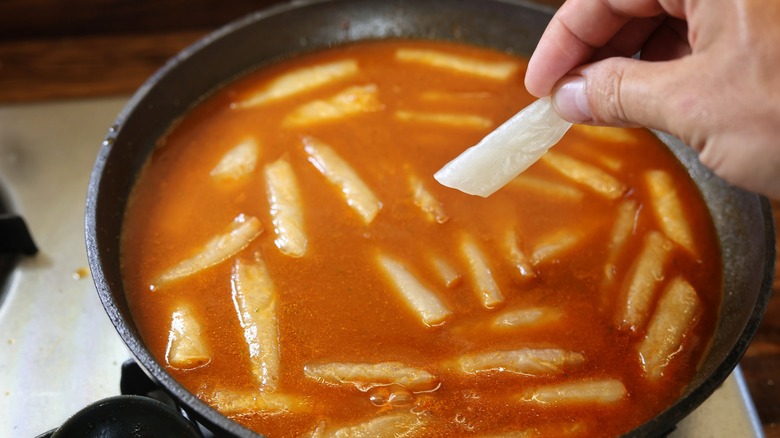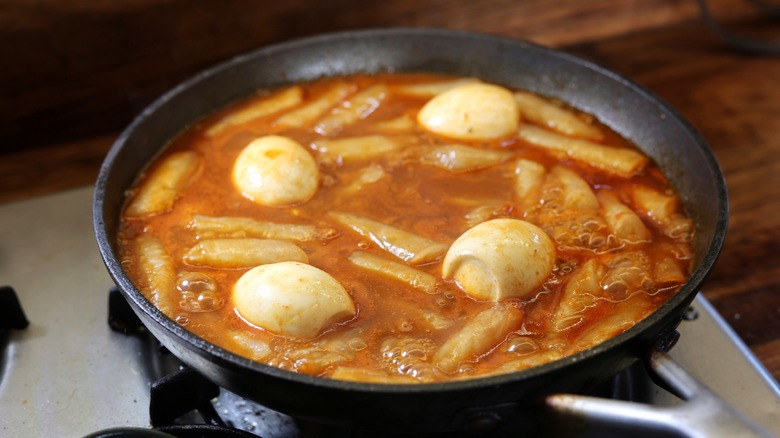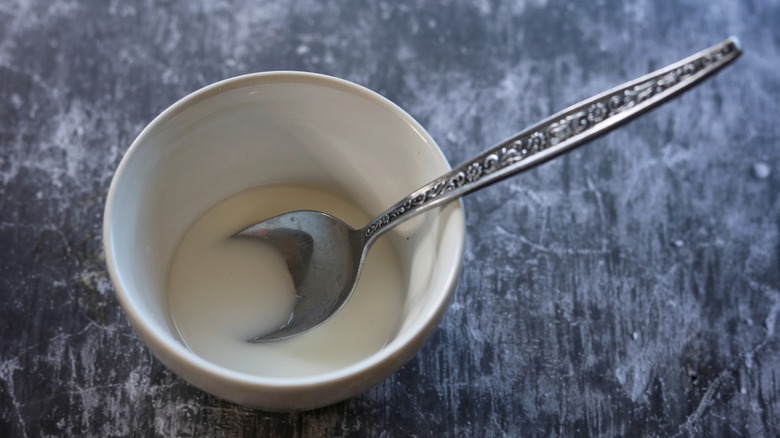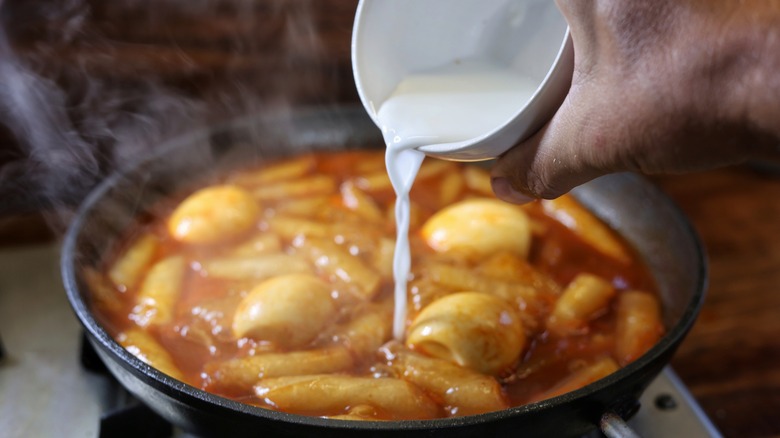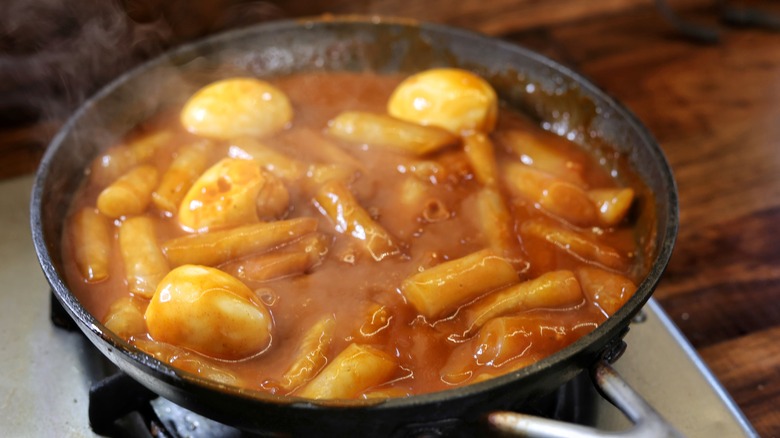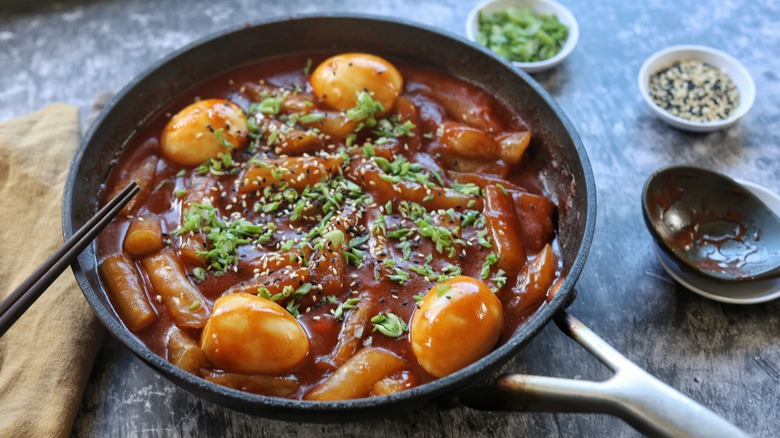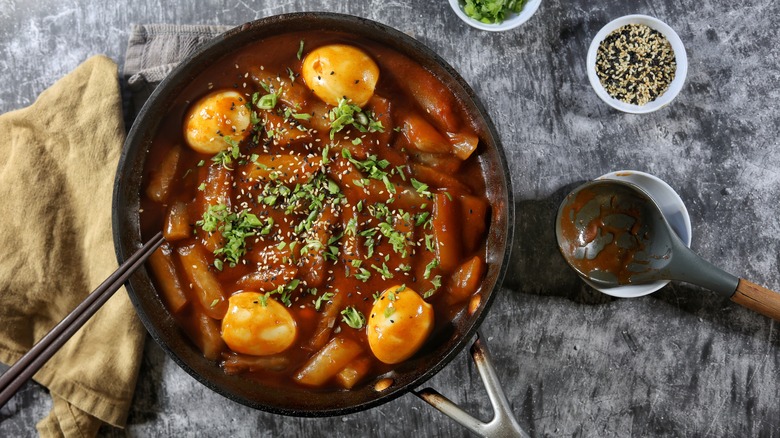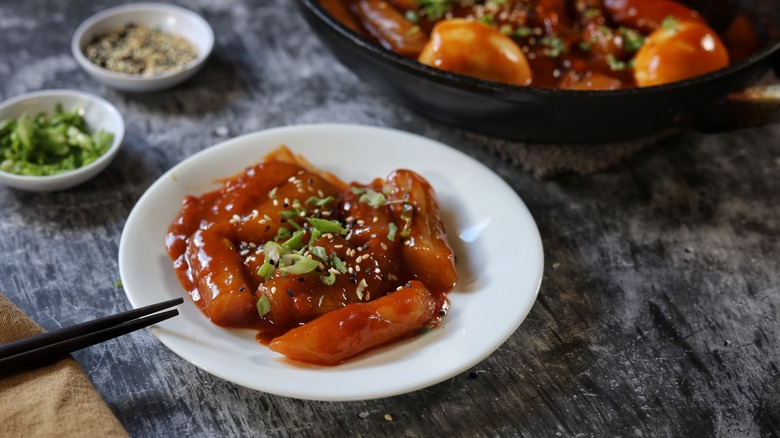Rice Paper Tteokbokki Recipe
Tteokbokki is a Korean dish that is known not only for its exquisite sauce, which is a perfect balance of salty, sweet, spicy, and savory, but also for the unusual and deeply satisfying texture of the rice cakes that make up the bulk of the dish. In this recipe, we make all of the wonderful flavors and textures of tteokbokki accessible to home cooks all over the world by substituting some of the more difficult-to-find ingredients for readily available staples.
Korean rice cakes are known for their unique chewy texture, but they might not be available at your local supermarket. Rice papers, which are also made with glutinous rice flour, are easy to find in many grocery stores and make a perfect substitute. By stacking and rolling the rice papers, we achieve a finished product with the same size, shape, and wonderful texture as the Korean rice cakes that are typically the base of tteokbokki. Whether you have access to Korean rice cakes or not, whether you are an old hand in the kitchen or a budding cook, this is a simple dish that you can whip up to explore a whole new world of flavors and textures.
Gather the tteokbokki ingredients
For this recipe you will need rice papers, which you will roll and use in place of the traditional Korean rice cakes. For the sauce you will need vegetable broth, soy sauce, sugar, rice vinegar, cornstarch, and gochujang (Korean red pepper paste). While tteokbokki is most often flavored with this ubiquitous Korean ingredient, in a pinch you can replace gochujang with sriracha or tomato paste (or a combination of the two) to achieve a similar flavor. After that, all you need are some boiled eggs to add heartiness and some thinly sliced scallions and toasted sesame seeds for garnish. Gather all those ingredients together and you are ready to start cooking.
Step 1: Hydrate the rice paper
Fill a plate with water and dip one rice paper for around 10 seconds.
Step 2: Lay it flat
Remove the rice paper from the water and place it on a second plate or cutting board.
Step 3: Stack two rice papers
Dip another rice paper and stack it on top of the first.
Step 4: Roll tightly
Grab one edge of the 2-rice-paper stack and roll it very tightly. Repeat until all of the rice papers are rolled.
Step 5: Slice the rolls into pieces
Slice the rolled rice papers into 3-inch segments. Set aside for now.
Step 6: Heat the broth
Bring the vegetable broth to a boil in a large skillet.
Step 7: Make the sauce
Reduce the heat to medium and add the gochujang, soy sauce, sugar, and rice vinegar to the broth. Stir until well-combined.
Step 8: Add the rice paper rolls
Add the rolled rice paper pieces to the broth.
Step 9: Simmer the tteokbokki
Add the boiled eggs to the broth and simmer, stirring occasionally, for 8 minutes.
Step 10: Make a slurry
While the tteokbokki is simmering, make a slurry of 1 tablespoon cornstarch and 2 tablespoons water in a small bowl.
Step 11: Add the slurry
Once the tteokbokki is finished simmering, stir in the cornstarch slurry.
Step 12: Cook until thick
Cook the tteokbokki until the sauce is noticeably thickened and then remove it from the heat.
Step 13: Time to eat
Serve the tteokbokki hot, garnished with toasted sesame seeds and thinly sliced scallions.
What is tteokbokki?
At its core, tteokbokki consists of tteok — Korean rice cakes made from glutinous rice flour — simmered in a rich sauce typically flavored with gochujang (Korean chili paste), soy sauce, and other seasonings. The name tteokbokki actually translates to simmered rice cakes. But it is important to note that Korean rice cakes are not the same as the rice cakes you find in the US. Garae-tteok — the ingredient of choice for this dish — are a cylindrical variety of Korean rice cakes and are more like a thick, chewy noodle, than the crisp, dry rice cakes people are more familiar with in the U.S.
Typically, tteokbokki broth is made from dried anchovies and dried kelp. Combined with the gochujang (Korean chili paste), these ingredients add deep undercurrents of umami to the dish. But there are many variants on the sauce in which the rice cakes are simmered. The original form of the dish, called gungjung tteokbokki was very different from most modern versions, consisting of tteok simmered with pine nuts, sesame oil, and beef. For a time, tteokbokki was most commonly seasoned with just soy sauce and oil. These days, gochujang-flavored tteokbokki is the most popular variety, but there are still many other options, such as curry tteokbokki (a Japanese-Korean fusion dish), rose tteokbokki (featuring a pink gochujang and cream sauce), and cream sauce tteokbokki (which is based on the Italian pasta carbonara and includes bacon).
How can I customize tteokbokki?
In this recipe, we have made a tteokbokki that is simple to put together with ingredients available in most U.S. grocery stores, but tteokbokki is a highly customizable dish that can be made to suit the tastes of whoever is cooking and eating. For starters, in this recipe, we have opted for vegetable broth for the sake of simplicity, but the broth is an easy place to begin customizing the recipe to your palate. You can go traditional, making your own anchovy and kelp broth, if you have access to those ingredients, or substitute whatever base you like. Fish or chicken stock are both great alternatives.
For this version, we have also added boiled eggs to increase the variety of flavors and textures, but tteokbokki is well-suited to many types of mix-in ingredients. Fish cakes are a common choice for additional protein, and large pieces of scallions, cabbage, and other vegetables are often added to make a heartier dish. Adding cheese is another popular choice.
If you want a little more heat, gochugaru (Korean red pepper powder) or other chilis can bring up the spiciness to match your desires. Tteokbokki can also easily be made vegan. All you have to do is leave out the boiled eggs in this recipe (or replace them with a vegan protein like tofu) and you have a dish that is richly flavored, beautifully textured, and completely vegan.
Rice Paper Tteokbokki Recipe
Tteokbokki is a Korean dish that features chewy rice cakes simmering in an exquisite sauce, which is a perfect balance of sweet, spicy, and savory.
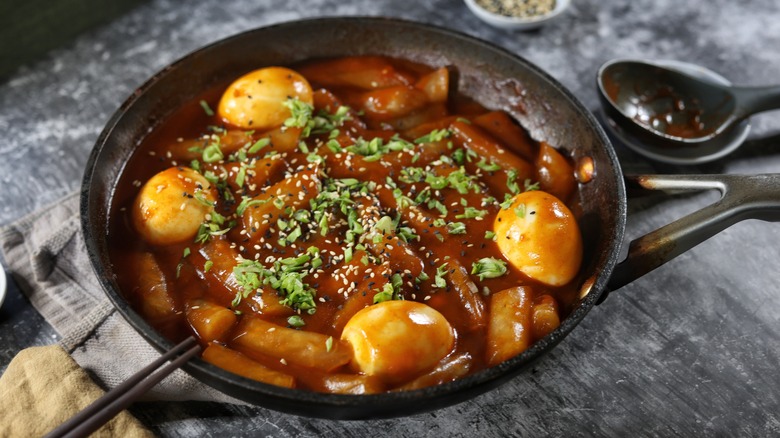
Ingredients
- 24 rice papers
- 3 cups vegetable broth
- 3 tablespoons gochujang
- 1 tablespoon soy sauce
- 1 tablespoon sugar
- 1 teaspoon rice vinegar
- 4 boiled eggs, peeled
- 1 tablespoon cornstarch
- Toasted sesame seeds, for garnish
- Thinly sliced scallions, for garnish
Directions
- Fill a plate with water and dip one rice paper for around 10 seconds.
- Remove the rice paper from the water and place it on a second plate or cutting board.
- Dip another rice paper and stack it on top of the first.
- Grab one edge of the 2-rice-paper stack and roll it very tightly. Repeat until all of the rice papers are rolled.
- Slice the rolled rice papers into 3-inch segments. Set aside for now.
- Bring the vegetable broth to a boil in a large skillet.
- Reduce the heat to medium and add the gochujang, soy sauce, sugar, and rice vinegar to the broth. Stir until well-combined.
- Add the rolled rice paper pieces to the broth.
- Add the boiled eggs to the broth and simmer, stirring occasionally, for 8 minutes.
- While the tteokbokki is simmering, make a slurry of 1 tablespoon cornstarch and 2 tablespoons water in a small bowl.
- Once the tteokbokki is finished simmering, stir in the cornstarch slurry.
- Cook the tteokbokki until the sauce is noticeably thickened and then remove it from heat.
- Serve the tteokbokki hot, garnished with toasted sesame seeds and thinly sliced scallions.
Nutrition
| Calories per Serving | 321 |
| Total Fat | 5.1 g |
| Saturated Fat | 1.5 g |
| Trans Fat | 0.0 g |
| Cholesterol | 149.2 mg |
| Total Carbohydrates | 61.2 g |
| Dietary Fiber | 1.7 g |
| Total Sugars | 5.4 g |
| Sodium | 869.6 mg |
| Protein | 7.1 g |
